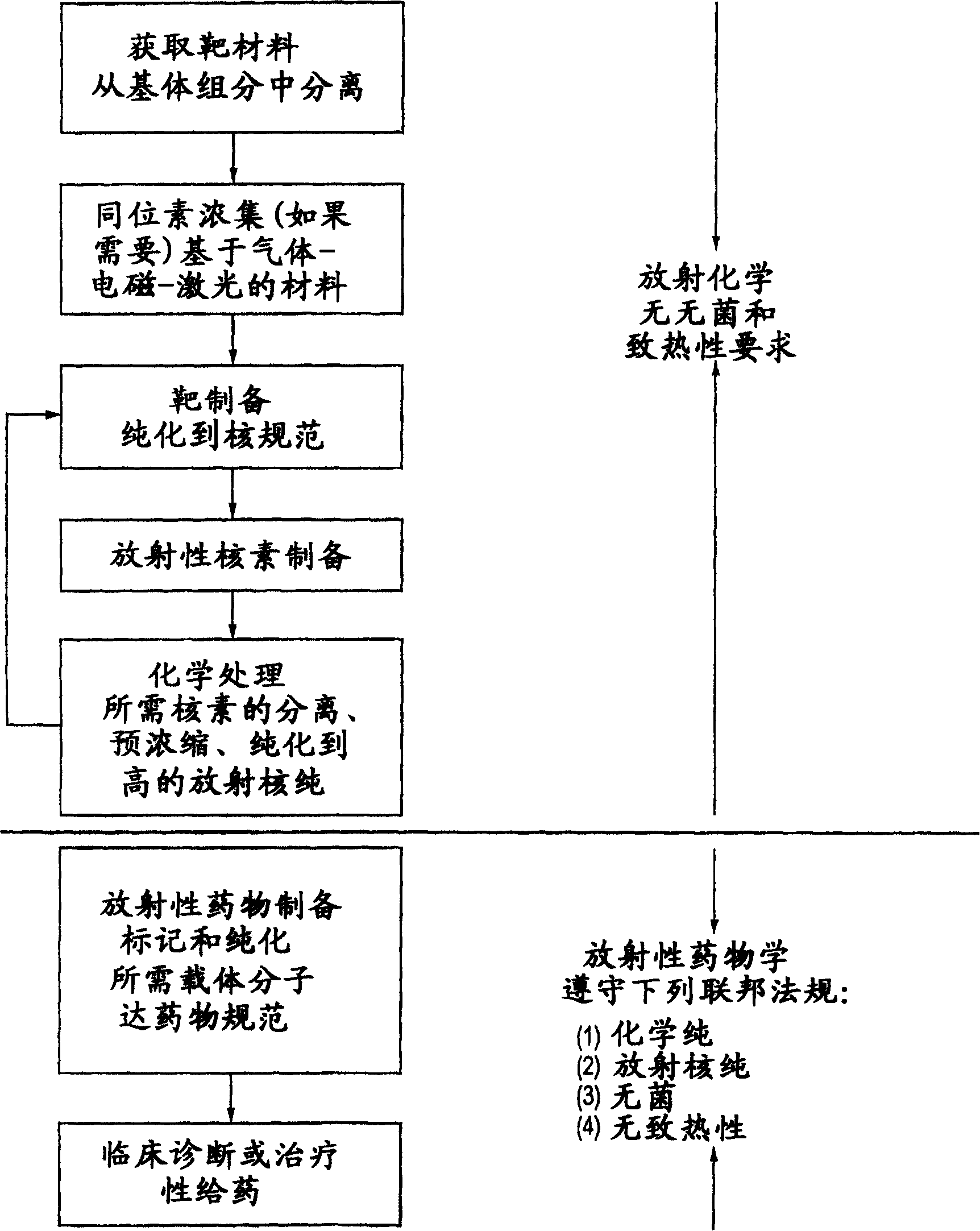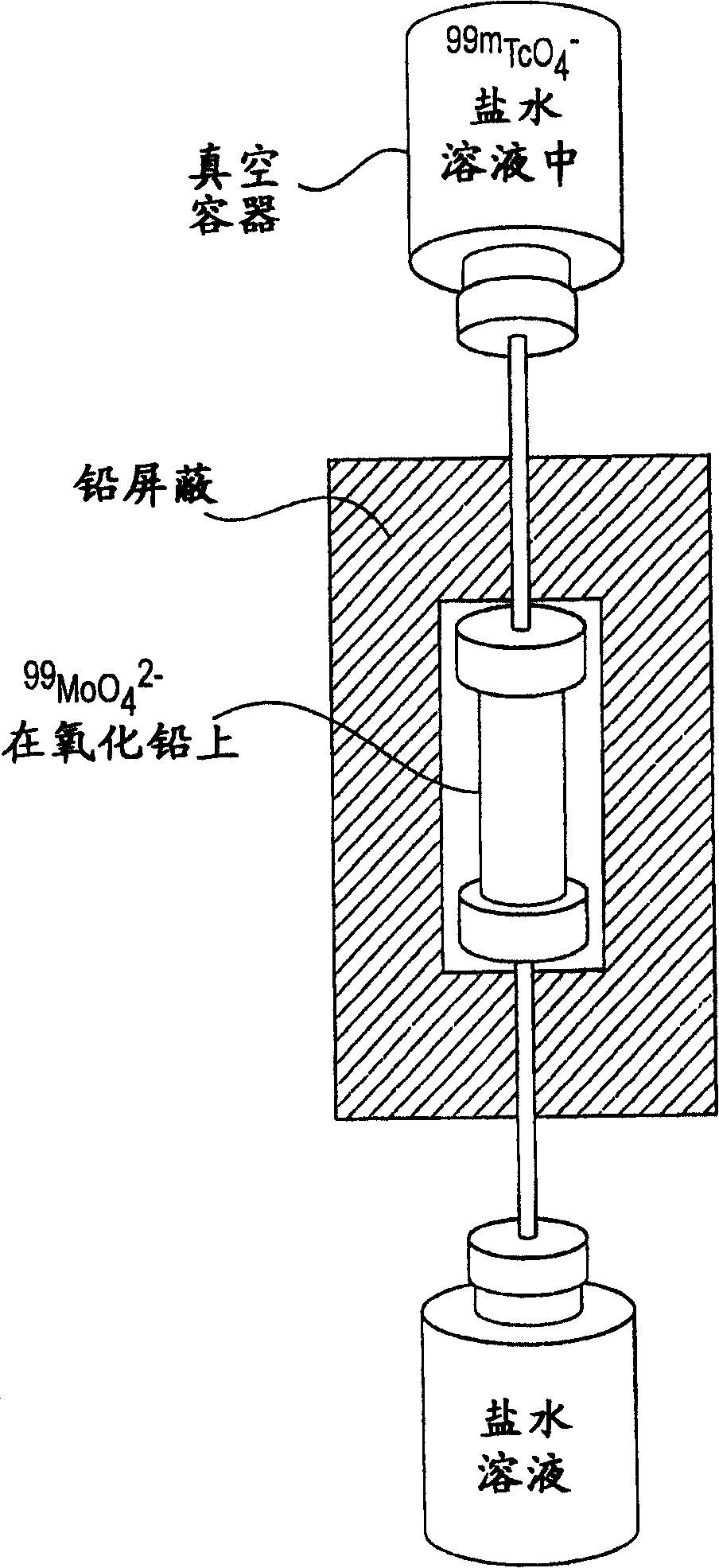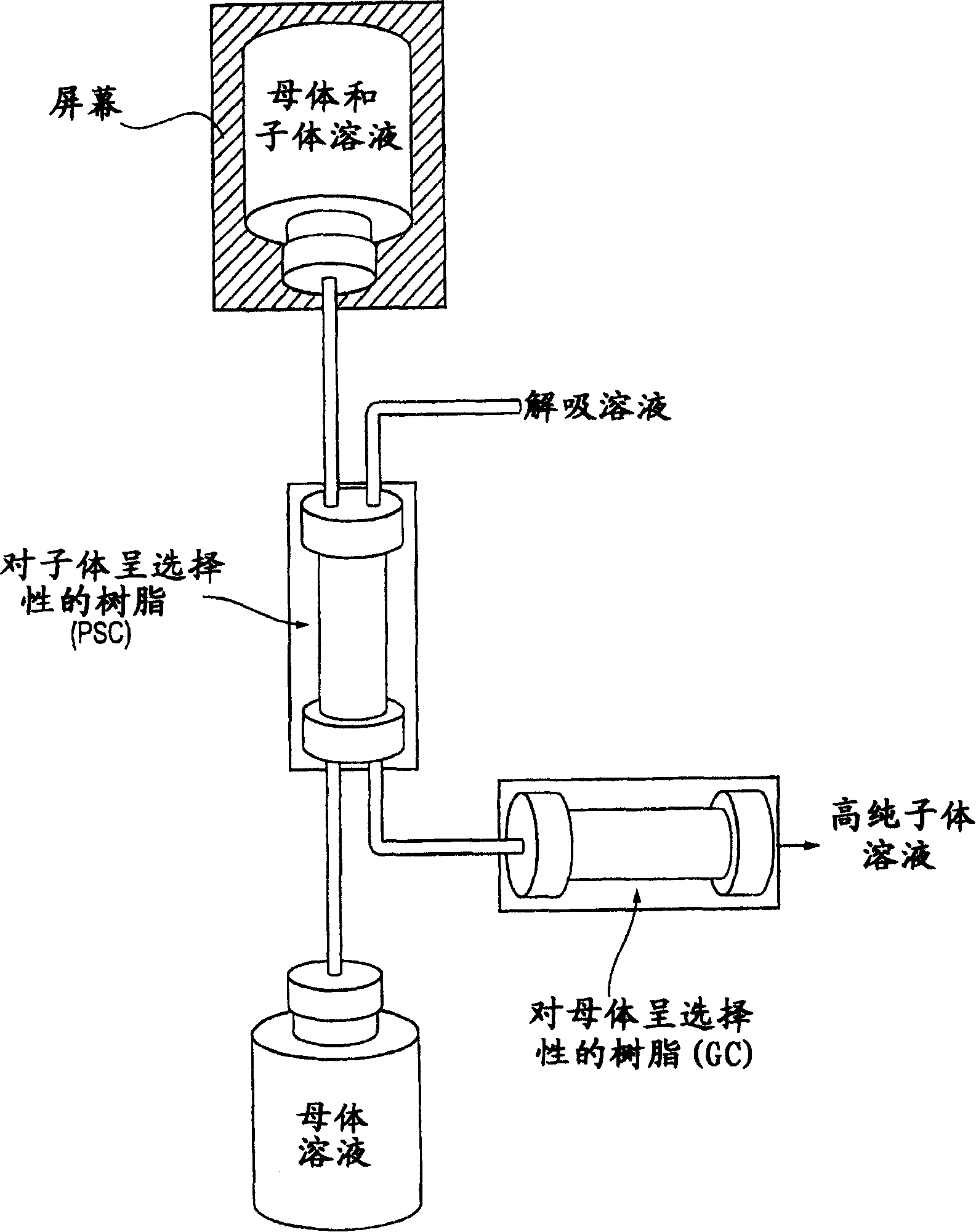Multicolumn selectivity inversion generator for production of high purity actinium for use in therapeutic nuclear medicine
A radionuclide and affinity technology, applied in the field of multi-column reverse selective generators for the preparation of ultra-pure radionuclide, can solve the problem of lack of safe predictability, endangering separation efficiency, parent radionuclide crossover To achieve the effect of maintaining chemical integrity, reducing the possibility of contamination, and good chromatographic performance
- Summary
- Abstract
- Description
- Claims
- Application Information
AI Technical Summary
Problems solved by technology
Method used
Image
Examples
Embodiment
[0148] All acids were trace metal grade and all other chemicals were ACS reagent grade and used as received. 207 Bi and 133 Ba radiotracers were evaporated to dryness twice in concentrated nitric acid and dissolved in 0.50M HNO before use. 3 middle. Standard radiometric procedures were used throughout, and all count rates were background corrected.
[0149] Extraction chromatography material was prepared using the general procedure described previously. [See Horwitz et. al., Anal. Chem., 63:522-525 (1991). ] Briefly, 0.25 M tris-n-octylphosphine oxide (TOPO) in n-dodecane (0.78 g) was dissolved in about 25 mL of ethanol and mixed with 50-100 μm of Amberchrom £ - CG71 resin (3.30 g) was mixed in about 25 mL of ethanol. The mixture was rotated on a rotary evaporator at room temperature for about 30 minutes, after which time the ethanol was distilled under vacuum. The resulting solid is called TOPO resin, which corresponds to Amberchrom £ - CG71 loaded with 0.25M TOPO / n-...
PUM
 Login to View More
Login to View More Abstract
Description
Claims
Application Information
 Login to View More
Login to View More - R&D
- Intellectual Property
- Life Sciences
- Materials
- Tech Scout
- Unparalleled Data Quality
- Higher Quality Content
- 60% Fewer Hallucinations
Browse by: Latest US Patents, China's latest patents, Technical Efficacy Thesaurus, Application Domain, Technology Topic, Popular Technical Reports.
© 2025 PatSnap. All rights reserved.Legal|Privacy policy|Modern Slavery Act Transparency Statement|Sitemap|About US| Contact US: help@patsnap.com



